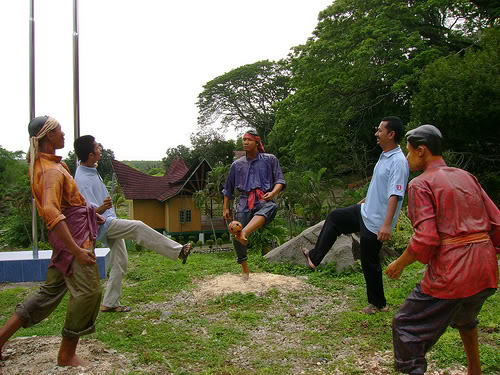 |
| A pair of wooden gasing. |
A gasing (also called spinning top or spintop) is a toy designed to be spun rapidly on the ground, the motion of which causes it to remain precisely balanced on its tip because of inertia. Traditionally gasing were constructed of wood, sometimes with an iron tip, and would be set in motion by aid of a string or rope coiled around its axis which, when pulled quickly, caused a rapid unwinding that would set the top in motion.
Historical Origins
 |
| An ancient spinning top in China. |
While the gasing is unique to mainly Singapore and Malaysia, tops have been played around the world for centuries. Tops/Gasing have turned up in many historical and archaeological sites, proving that they have been in existence since ancient times.
People in Asia made tops from a variety of objects, including conch shells, wood, seed pods and even iron. During the Song dynasty (960–1279) in China, court ladies were said to have played with tops made of ivory.
How to Play
 |
| A spinning top being lashed out. |
A string or rope must be coiled around the axis, or the tip. It must be thrown and pulled back quickly, causing the rope and string to uncoil quickly and cause the gasing to be set in motion and start spinning.
Try to toss the gasing far, but not too much in order to be able to pull back the string coiled around it to let it rotate.
Sources
http://en.wikipedia.org/wiki/Top
http://eresources.nlb.gov.sg/infopedia/articles/SIP_401_2004-12-09.html
http://malaysiangames.blogspot.sg/p/gasing-and-tarik-upih.html









